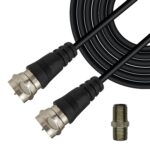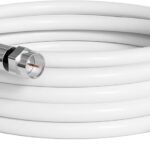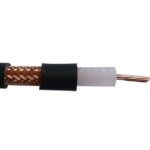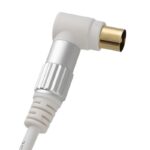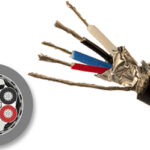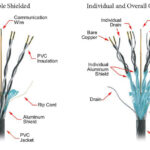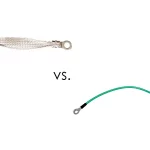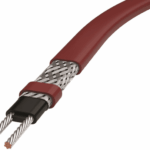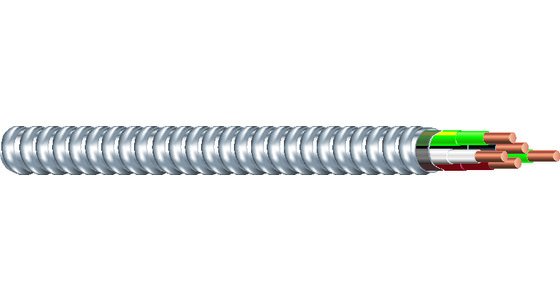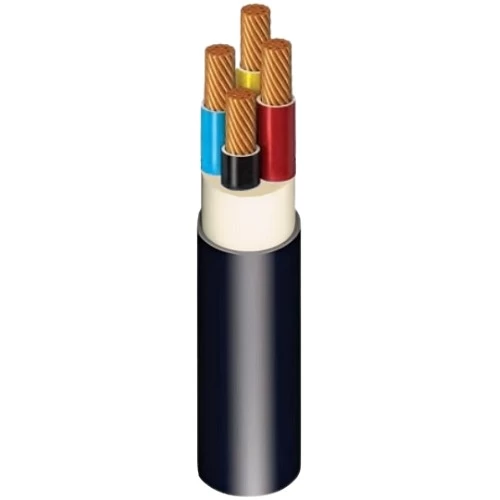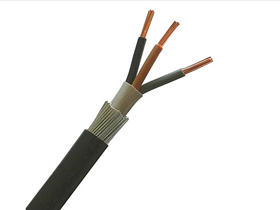When setting up your TV antenna system, choosing the right coaxial cable is crucial for optimal signal reception and picture quality. This comprehensive guide covers everything you need to know about TV antenna coaxial cable, from types and specifications to installation tips and troubleshooting.

tv antenna coaxial cable
What is TV Antenna Coaxial Cable?
TV antenna coaxial cable is a specialized transmission line designed to carry radio frequency (RF) signals from your antenna to your television or tuner. The cable consists of a central conductor surrounded by insulation, a metallic shield, and an outer protective jacket. This design minimizes signal loss and interference, ensuring clear reception of over-the-air broadcasts.
Types of Coaxial Cable for TV Antennas
RG-6 Coaxial Cable
RG-6 is the gold standard for modern TV antenna installations. With its 75-ohm impedance and superior shielding, RG-6 cable provides excellent signal quality for both VHF and UHF frequencies. The thicker copper conductor and enhanced shielding make it ideal for longer cable runs and high-definition broadcasts.
Key specifications:
- Impedance: 75 ohms
- Center conductor: 18 AWG solid copper
- Frequency range: Up to 3 GHz
- Maximum recommended length: 100-150 feet
RG-59 Coaxial Cable
RG-59 is an older standard that's still found in some installations. While adequate for short runs and analog signals, it's not recommended for modern digital TV reception due to higher signal loss and inferior shielding compared to RG-6.
Key specifications:
- Impedance: 75 ohms
- Center conductor: 20 AWG
- Frequency range: Up to 1 GHz
- Best for runs under 50 feet
Quad-Shield vs. Dual-Shield Cable
Quad-shield coaxial cable offers maximum protection against interference with four layers of shielding: two foil shields and two braided shields. This makes it ideal for areas with high electromagnetic interference or installations requiring maximum signal integrity.
Dual-shield cable provides good protection with two shielding layers (one foil, one braid) and is suitable for most residential installations where interference isn't a major concern.
Choosing the Right TV Antenna Coaxial Cable
Cable Length Considerations
Signal loss increases with cable length, so choose the shortest cable possible for your installation. For runs over 100 feet, consider using a signal amplifier or higher-grade cable to maintain signal strength.
Environmental Factors
- Outdoor installations: Use weatherproof cable rated for direct burial or aerial mounting
- Indoor installations: Standard RG-6 is typically sufficient
- Underground runs: Choose direct-burial rated cable with moisture protection
Frequency Requirements
Modern TV broadcasts operate across VHF (54-216 MHz) and UHF (470-806 MHz) bands. Ensure your coaxial cable supports these frequencies with minimal loss. RG-6 cable easily handles these requirements and provides headroom for future applications.
Installation Best Practices
Proper Connector Installation
Quality F-connectors are essential for maintaining signal integrity. Compression connectors provide the most reliable connection and are preferred over crimp-on or twist-on varieties.
Installation steps:
- Strip the cable jacket to expose 1/4 inch of braided shield
- Fold the braid back over the jacket
- Strip the dielectric to expose 1/4 inch of center conductor
- Install the compression connector using proper tools
- Ensure no shield wires touch the center conductor
Cable Routing and Protection
- Avoid sharp bends (minimum bend radius of 5 times the cable diameter)
- Keep coaxial cable away from power lines and electrical devices
- Use appropriate cable clips and supports for long runs
- Seal all outdoor connections with weatherproof tape or boots
Grounding Requirements
Proper grounding is essential for safety and signal quality. Ground the antenna system according to local electrical codes, typically within 20 feet of the antenna entrance to the building.
Common Issues and Troubleshooting
Signal Loss Problems
Symptoms: Pixelated picture, signal dropouts, missing channels Solutions:
- Check all connections for corrosion or looseness
- Verify cable isn't damaged or kinked
- Consider adding a signal amplifier for long cable runs
- Upgrade from RG-59 to RG-6 if using older cable
Interference Issues
Symptoms: Intermittent reception, picture distortion Solutions:
- Upgrade to quad-shield cable in high-interference areas
- Separate coaxial cable from power lines and electronics
- Check for damaged cable shielding
- Install ferrite cores to reduce common-mode interference
Weather-Related Problems
Symptoms: Reception issues during rain or high winds Solutions:
- Inspect outdoor connections for water intrusion
- Replace weathered cable and connectors
- Ensure proper drainage around cable entry points
- Use high-quality weatherproof connectors
Cable Specifications and Performance
Signal Loss (Attenuation)
Signal loss varies by frequency and cable type:
RG-6 Cable Loss (per 100 feet):
- 54 MHz (VHF-Lo): 1.5 dB
- 200 MHz (VHF-Hi): 2.8 dB
- 700 MHz (UHF): 5.4 dB
RG-59 Cable Loss (per 100 feet):
- 54 MHz: 2.2 dB
- 200 MHz: 4.2 dB
- 700 MHz: 8.1 dB
Return Loss and VSWR
Quality coaxial cable should maintain low return loss (high return loss values) across the operating frequency range. Look for cables with return loss specifications of 20 dB or better.
Maintenance and Longevity
Regular Inspection
Inspect your coaxial cable system annually, checking for:
- Connector corrosion or damage
- Cable jacket deterioration
- Water intrusion at outdoor connections
- Proper cable support and routing
Replacement Indicators
Consider replacing coaxial cable when you notice:
- Visible damage to the outer jacket
- Corrosion at connector interfaces
- Increasing signal quality problems
- Cable age exceeding 15-20 years for outdoor installations
Cost Considerations and Value
While premium coaxial cable costs more initially, the investment pays off through:
- Better signal quality and reliability
- Reduced maintenance requirements
- Future-proofing for evolving broadcast standards
- Lower total cost of ownership
Budget approximately $0.50-2.00 per foot for quality RG-6 cable, depending on shielding level and environmental ratings.
Future-Proofing Your Installation
Modern coaxial cable installations should consider future needs:
- Choose RG-6 or better for all new installations
- Plan for potential 4K and ATSC 3.0 broadcasts
- Install extra capacity for multiple tuners or distribution
- Use quality components that will last 15-20 years
Conclusion
Selecting the right TV antenna coaxial cable is fundamental to achieving optimal reception quality. RG-6 quad-shield cable represents the best choice for most installations, providing superior performance, durability, and future compatibility. Proper installation techniques and regular maintenance ensure your antenna system delivers reliable service for years to come.
By understanding cable specifications, installation best practices, and maintenance requirements, you can build a robust TV antenna system that provides excellent reception quality while minimizing ongoing issues and costs.

